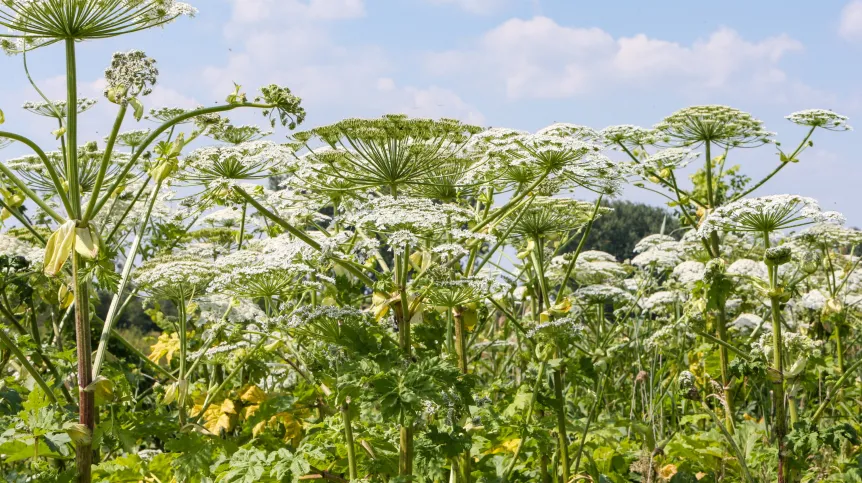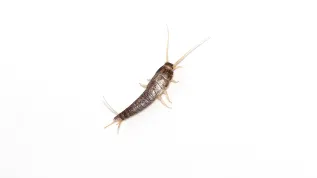
The invasive Sosnowsky’s hogweed attracts vast numbers of honeybees, crowding out other pollinators and threatening local ecosystems, according to new research from the Polish Academy of Sciences.
Over time, the dominance of honeybees in hogweed-covered areas could lead to the disappearance of wild bee species and disrupt natural pollination processes.
Research by Emilia Grzędzicka, PhD, at the academy’s Institute of Systematics and Evolution of Animals published in Apidologie, shows that hogweed invasions create hotspots of extremely high honeybee density.
The findings echo earlier work by Jacek Wendzonka, PhD, of Adam Mickiewicz University in Poznań, who warned that wild bees “have no chance of fair, ecological competition,” leading to their steady decline.
“The result is that the honeybee is expanding, while other species are threatened with extinction,” Grzędzicka said.
Her multi-year study covered 34 sites in southern Poland, mainly in the Podhale region and around Kraków, where hogweed is widespread.
Each site included areas free of the plant, partially covered (below 40%), and heavily overgrown (over 60%). During the flowering season in June and July, Grzędzicka counted pollinators visiting flowers.
In areas dominated by hogweed, honeybees were up to four times more numerous than in sites without it. Wild pollinators—including solitary bees, bumblebees, and flies—were nearly absent. Once the hogweed stopped flowering, honeybees lost interest and other species returned.
Grzędzicka found that distance from apiaries did not affect results. “Honeybees are excellent at remembering places with abundant nectar and use them intensively. This limits access to food for other species,” she explained.
The researcher warned that this imbalance could accelerate hogweed’s spread. The more honeybees visit, the more effectively the plant is pollinated. One plant can produce up to 20,000 seeds, and dense stands generate millions. “Hogweeds are therefore beginning to occupy increasingly larger areas, displacing native plants that provide food for wild pollinators,” she said.
Hogweed’s floral structure also gives honeybees a competitive edge. Its large, flat umbels composed of thousands of small flowers allow bees to forage en masse without moving between plants. Wild pollinators, which are solitary and prefer diverse meadows, cannot compete. “They struggle in homogeneous hogweed clusters, and as a result, they gradually disappear from these areas,” Grzędzicka said.
She noted that the problem dates back to the 1970s, when the plant was introduced as a feed and honey crop. It now dominates many valleys in the Podhale region. “In some places, this is an ecological disaster. The environment can be so impoverished that only the hogweed remains,” she emphasised.
Attempts to control the plant have been largely ineffective. “I’ve seen cases where, after removing a five-hectare patch of hogweed, new plants sprouted within two weeks,” Grzędzicka said.
Some beekeepers, she added, tacitly tolerate the species because of its nectar yield. “It’s not uncommon for hive owners to remove dangerous plants only after they have flowered. And that is too late, because the seeds have already been spread,” she said.
Effective control, she argued, requires early removal and greater awareness. “It is not just a weed, but a species that poses a real threat to ecosystems,” Grzędzicka said.
She cited pollinator expert Hajnalka Szentgyörgy, PhD, from the Jagiellonian University, who co-authored a UN–FAO report, as saying that “large-scale beekeeping is as much of a threat as large-scale agriculture. We should move towards maintaining fewer bee colonies, but in much better health.”
“The point is not to demonise the honeybee,” Grzędzicka added, “but to draw attention to the problem of excessive density and the lack of control over the placement of apiaries in the landscape.”
In addition to its ecological impact, Sosnowsky’s hogweed poses a direct hazard to humans. It contains furanocoumarins, which cause severe burns when exposed to sunlight. “Such wounds can take months to heal,” Grzędzicka said, adding that some studies suggest the compounds may also have carcinogenic and teratogenic effects.
PAP - Science in Poland, Katarzyna Czechowicz (PAP)
kap/ agt/ mow/
tr. RL













